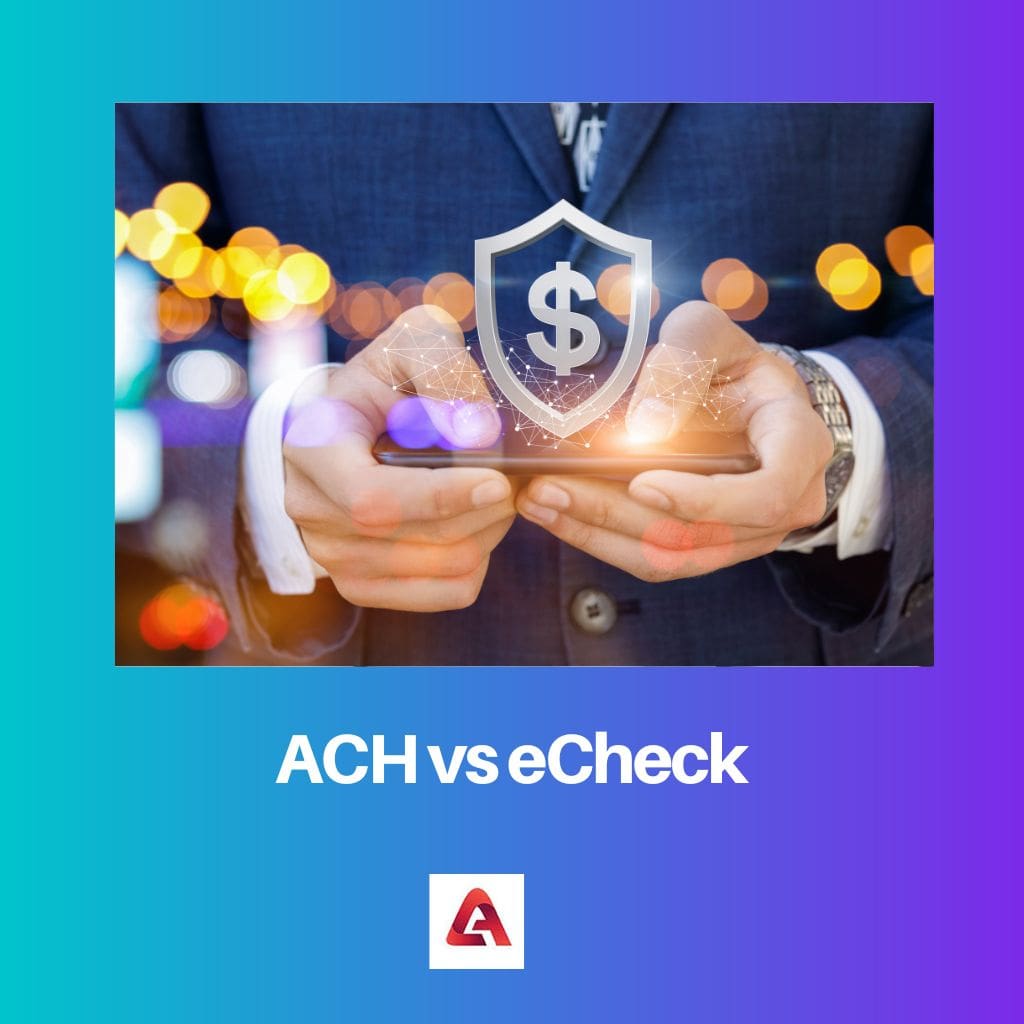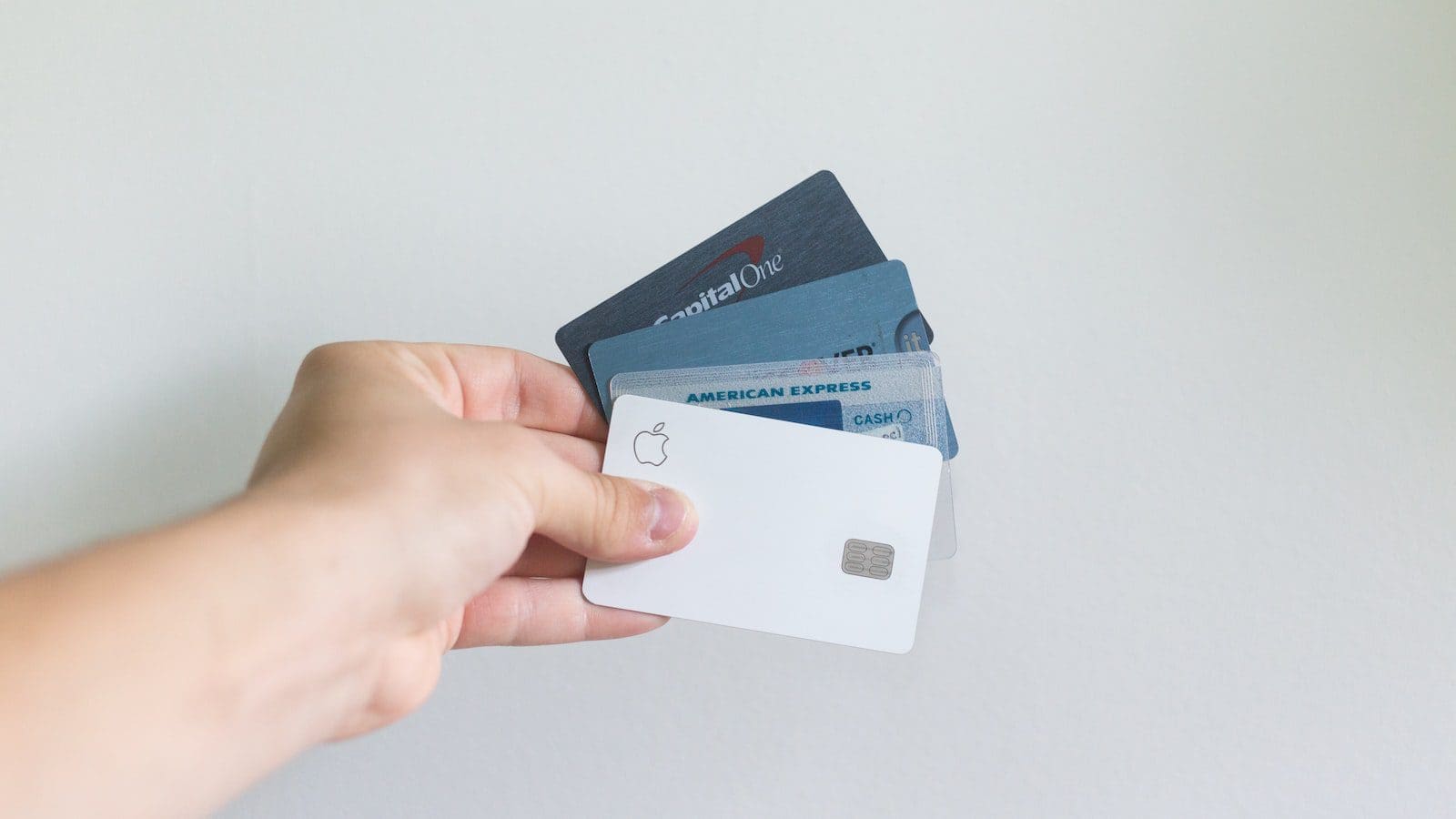ACH (Automated Clearing House) transfers electronically move funds between bank accounts, typically used for recurring payments like salaries or bills, while eChecks are digital versions of paper checks, utilizing the same banking network but with faster processing times and reduced costs, making them suitable for one-time payments or transactions requiring immediate clearance.
Key Takeaways
- ACH (Automated Clearing House) is an electronic network for financial transactions in the United States; eChecks are electronic versions of paper checks.
- ACH transactions involve directly transferring funds between banks without needing a physical check; eChecks are processed digitally but still require the same authorization steps as paper checks.
- ACH transactions are faster and more cost-effective than eChecks, but eChecks offer more familiarity for those accustomed to traditional checks.
ACH vs eCheck
The difference between ACH and E-check is that ACH is a money-transferring process used for the transaction of money from one bank account to another. E-check is the short form of electronic check, and it is a method of payment used as a replacement for traditional paper checks.

Comparison Table
| Feature | ACH | eCheck |
|---|---|---|
| Definition | ACH (Automated Clearing House) is a network for electronically transferring funds between bank accounts in the United States. | An eCheck (electronic check) is a digital representation of a paper check that uses the ACH network for processing. |
| Initiation | Can be initiated by businesses, individuals, or financial institutions. | Typically initiated by individuals or businesses to pay someone. |
| Information Required | Routing number, account number (for receiving or sending) | Routing number, account number (for paying), sometimes driver’s license or ID (for verification) |
| Processing Speed | Faster (typically 1-3 business days) | Slower (can take several business days, similar to paper checks) |
| Cost | May have fees associated with initiating or receiving transfers, depending on the bank or financial institution. | May have fees associated with processing, similar to paper checks. |
| Security | Considered secure, uses encryption and authentication measures. | Generally considered secure, but relies on the security practices of the sender and receiver. |
| Suitability | Ideal for recurring payments, payroll, bill payments, direct deposits. | Ideal for one-time payments where the payer prefers a check-like experience. |
What is ACH?
How ACH Works:
- Initiation: ACH transactions can be initiated by businesses, financial institutions, or individuals through their bank or a third-party service provider. The initiator provides the necessary transaction details, including the recipient’s bank account information, the amount to be transferred, and the purpose of the transaction.
- Processing: Once initiated, ACH transactions are processed in batches at specific times throughout the day. The sender’s bank (originating depository financial institution – ODFI) collects all outgoing transactions and sends them to the ACH operator for processing.
- Clearing and Settlement: The ACH operator sorts and processes the transactions, directing them to the respective receiving banks (receiving depository financial institution – RDFI). The receiving banks then credit or debit the recipients’ accounts accordingly. ACH transactions typically take 1-3 business days to complete, depending on the type of transaction and the banks involved.
- Notification: Once the transaction is completed, both the sender and the receiver may receive notifications confirming the transfer of funds. These notifications can be in the form of email alerts, text messages, or bank statements.
- Authorization and Security: ACH transactions require authorization from the account holder, either through written consent or electronic authorization. Additionally, ACH transactions are secure, employing encryption and other security measures to protect sensitive financial information during transmission.

What is eCheck?
How eChecks Work:
- Initiation: Similar to traditional checks, eChecks require the payer to provide the recipient’s bank account information, including the routing number and account number, along with the payment amount and any necessary authorization. eChecks can be initiated through various channels, including online banking platforms, payment gateways, or dedicated eCheck processing services.
- Processing: Once initiated, the eCheck transaction is processed electronically through the ACH network. The payer’s bank, acting as the originating depository financial institution (ODFI), sends the transaction details to the ACH operator for processing. The ACH operator then routes the transaction to the recipient’s bank, known as the receiving depository financial institution (RDFI), for verification and settlement.
- Verification and Settlement: Upon receiving the eCheck transaction, the recipient’s bank verifies the authenticity of the transaction and ensures that the payer has sufficient funds to cover the payment. If the verification is successful, the recipient’s bank credits the funds to the recipient’s account. eCheck transactions typically take 1-3 business days to complete, similar to traditional ACH transactions.
- Notification: Once the eCheck transaction is processed and settled, both the payer and the recipient may receive notifications confirming the transfer of funds. These notifications can be in the form of email alerts, text messages, or bank statements, providing transparency and accountability for the transaction.

Main Differences Between ACH and eCheck
- ACH (Automated Clearing House) is a network used to electronically transfer funds between bank accounts, while eCheck (Electronic Check) is a digital version of a traditional paper check.
- ACH transactions are typically used for recurring payments like salaries or bills, while eChecks are suitable for both one-time payments and recurring transactions.
- ACH transactions are processed in batches and may take 1-3 business days to complete, whereas eChecks leverage the ACH network but offer faster processing times and reduced costs.
- ACH transactions require authorization from the account holder and involve the exchange of electronic payment details, while eChecks require similar information as traditional checks but are transmitted electronically.
- ACH transfers are initiated by businesses, financial institutions, or individuals through their banks, while eChecks can be initiated through various channels, including online banking platforms, payment gateways, or dedicated eCheck processing services.
- https://www.ingentaconnect.com/content/hsp/jpss/2008/00000002/00000002/art00011
- https://aisel.aisnet.org/jise/vol14/iss3/7/

This article is a treasure trove of knowledge about ACH and eChecks, I’ve learned so much from it!
Couldn’t have said it better myself, it’s a rich source of information regarding online money transactions.
The article does an excellent job comparing ACH and eChecks. I really like how the differences between the two are so well explained. Great read!
I completely agree, the explanation of the intricacies between ACH and eChecks is very thorough. Well done!
I appreciate the clarity provided, it has increased my knowledge about online money transactions
An interesting comparison between ACH and eChecks, this article is the golden standard of financial journalism
I must say, the details given on ACH and eChecks are absolutely enlightening. Very informative.
The author has done a great job at explaining ACH and eChecks, there’s no room for second-guessing after reading this.
Quite true, this is a compelling argument for the superiority of digital transactions.
The points made about ACH and eChecks are valid, it’s refreshing to see such in-depth coverage of complex financial matters.
I concur, it’s encouraging to see discussions about these topics happening in a public forum.
This is a well-researched piece that provides valuable insight into ACH and eChecks. Nicely done!
Agreed, the depth of knowledge shown by the author is commendable.
There’s definitely room for improvement in terms of the depth of information provided about ACH and eChecks. More specifics and real-world examples would have been appreciated.
Completely agree, real-world illustrations would have added significant value to the comparison.
I see your point, concrete examples would have made the article more relatable to everyday experiences.
The article seems to have a strong bias in favor of ACH over eChecks. It would have been better if eChecks were presented as a more viable option.
Valid point, there’s potential for a more balanced argument to be presented in the article.
The article could have delved more into the potential risks of ACH and eChecks. This feels a bit one-sided in the argument.
I understand your perspective, could definitely use more focus on potential drawbacks.
I agree with Louis, an article about money transactions should consider the risks involved in the process.
This article has effectively highlighted the differences between ACH and eChecks. Great job!
I couldn’t be more impressed with the detailed analysis provided here. Fantastic!
Absolutely agree, the comparison is spot on. Well-written piece.